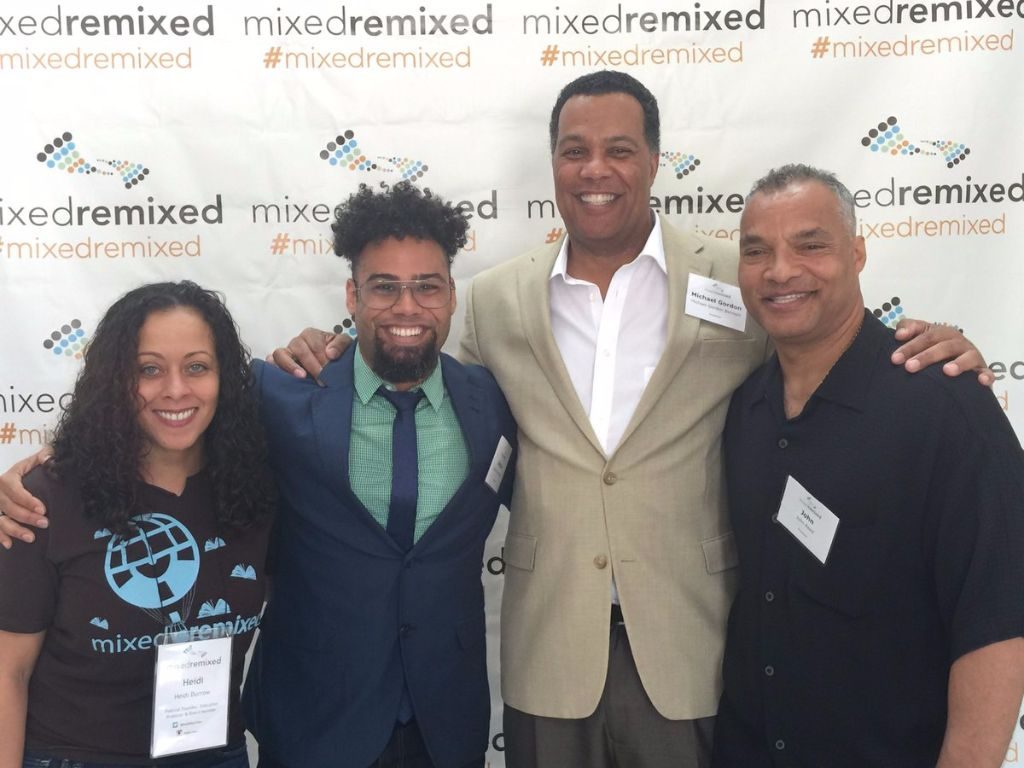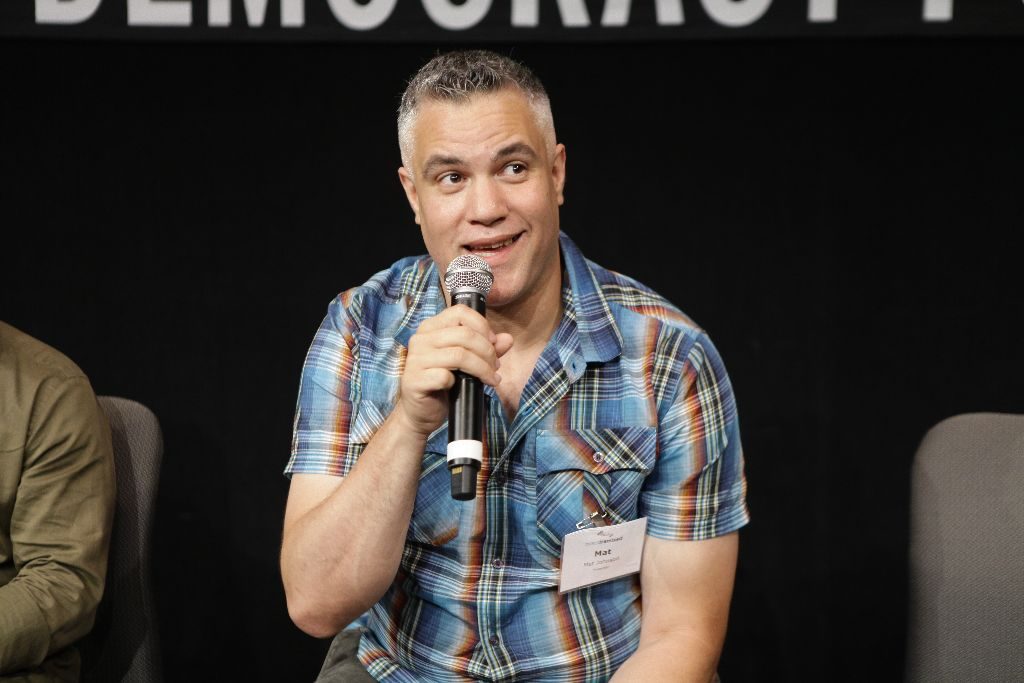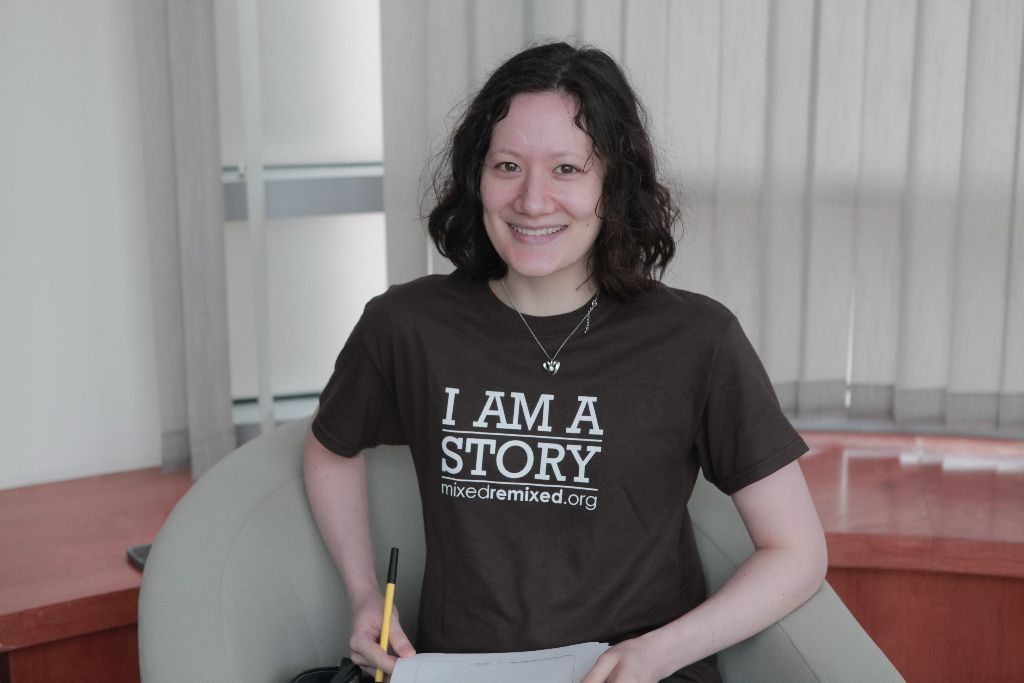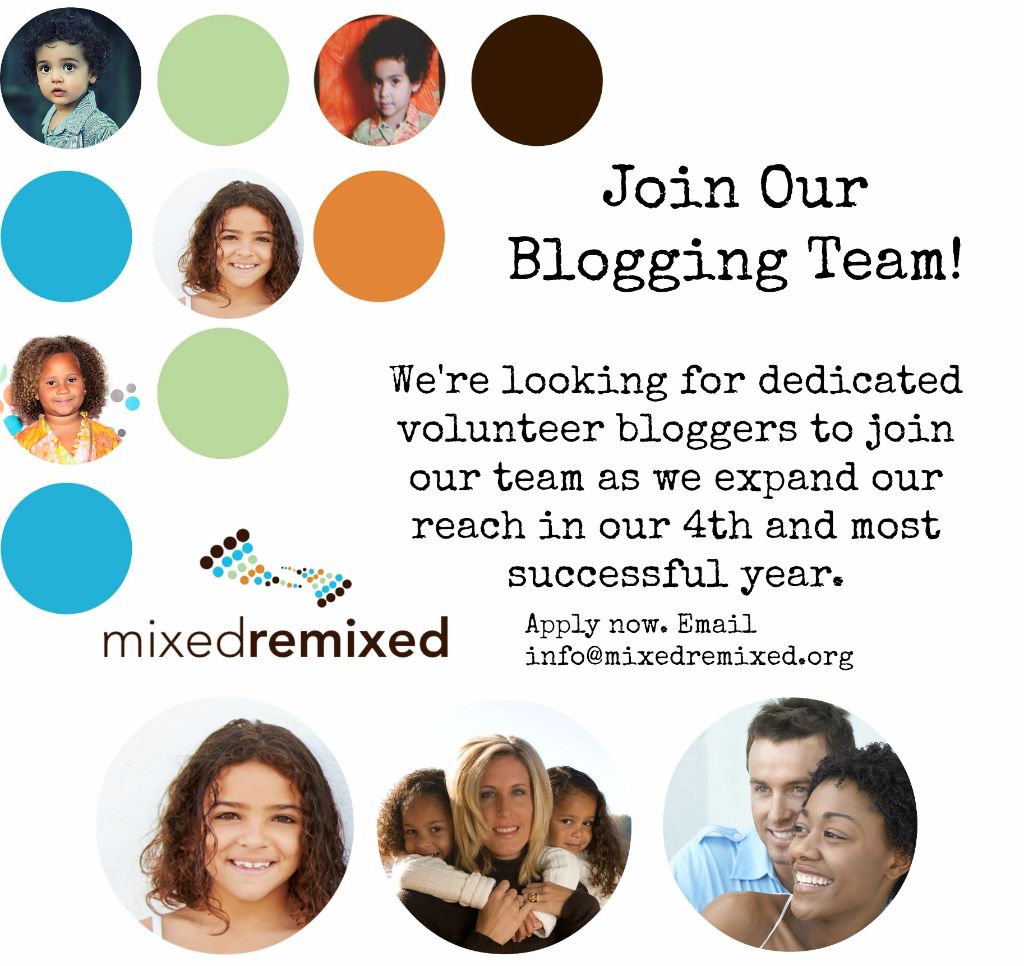
We’re expanding our dedicated volunteer blogging team and we want YOU to be part of it. Please email info(at)mixedremixed.org with a brief letter of interest and experience including links to up to 3 blog posts or essays you’ve written.
Everyone’s Got Love for Loving, the film!
Loving To Take the Toronto International Film Festival by Storm!
 Everyone can’t help but LOVE on the film Loving! And that’s no different in Toronto where the film will screen as part of TIFF! Look what People magazine says about the film that is already creating lots of Oscar buzz! The film will also open the Austin Film Festival.
Everyone can’t help but LOVE on the film Loving! And that’s no different in Toronto where the film will screen as part of TIFF! Look what People magazine says about the film that is already creating lots of Oscar buzz! The film will also open the Austin Film Festival.
If you’re in New York or LA, stay tuned for more information about the meet-ups we’re planning for Festival folks so that we can see the film together! #thisisloving
Mixed Remixed Festival On-Line Book Club Kicks Off with Mat Johnson’s Loving Day
An On-Line Book Club to Discuss Books About Mixed-Race and Multiracial Experience and Identity
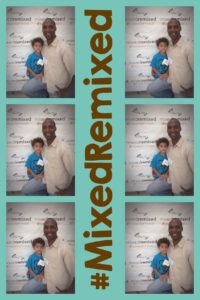 One comment we hear over and over after the Festival each year is: “I can’t wait a full year to get together again!”
One comment we hear over and over after the Festival each year is: “I can’t wait a full year to get together again!”
Well, we agree! And even though our all-volunteer team is small and our budget is modest, we’re rolling out new ways that we can keep that connection to all of you throughout the year.
What’s our first initiative? A Mixed Remixed Festival Year-Round Book Club!
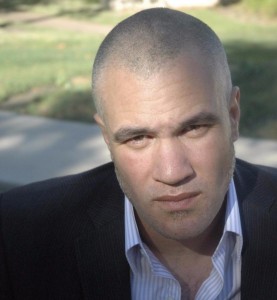 We’ll choose books that we think will speak to you and deal with mixed-race and multiracial families and people. Each month we’ll host a call-in podcast so that we can discuss the book together as well as having an on-line Twitter chat. Can’t make those events? Well then you can keep the conversation going in our new Goodreads Book Club all month long. Join the group now!
We’ll choose books that we think will speak to you and deal with mixed-race and multiracial families and people. Each month we’ll host a call-in podcast so that we can discuss the book together as well as having an on-line Twitter chat. Can’t make those events? Well then you can keep the conversation going in our new Goodreads Book Club all month long. Join the group now!
Mat Johnson’s Loving Day Is Inaugural Mixed Remixed Book Club Pick!
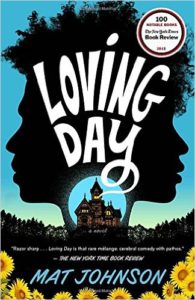 We’re excited that Mat Johnson’s Loving Day is our inaugural book club pick! This wonderful book is out in paperback this week! So get a copy and start reading now! We’ll meet-up on the podcast on Oct. 4 to talk about it in a discussion led by festival founder and New York Times best-selling writer Heidi Durrow! In the meantime, share your thoughts with our Goodreads Book Club Group.
We’re excited that Mat Johnson’s Loving Day is our inaugural book club pick! This wonderful book is out in paperback this week! So get a copy and start reading now! We’ll meet-up on the podcast on Oct. 4 to talk about it in a discussion led by festival founder and New York Times best-selling writer Heidi Durrow! In the meantime, share your thoughts with our Goodreads Book Club Group.
This is what people are saying about Mat Johnson and his book Loving Day:
A NEW YORK TIMES NOTABLE BOOK | NAMED ONE OF THE TEN BEST BOOKS OF THE YEAR BY MIAMI HERALD AND ONE OF THE BEST BOOKS OF THE YEAR BY San Francisco Chronicle • NPR • Men’s Journal • The Denver Post • Slate • The Kansas City Star • Time Out New York | From the author of the critically beloved Pym (“Imagine Kurt Vonnegut having a beer with Ralph Ellison and Jules Verne.”—Vanity Fair) comes a ruthlessly comic and moving tale of a man discovering a lost daughter, confronting an elusive ghost, and stumbling onto the possibility of utopia.
“Exceptional . . . To say that Loving Day is a book about race is like saying Moby-Dick is a book about whales. . . . [Mat Johnson’s] unrelenting examination of blackness, whiteness and everything in between is handled with ruthless candor and riotous humor. . . . Even when the novel’s family strife and racial politics are at peak intensity, Johnson’s comic timing is impeccable.”—Los Angeles Times
After Orlando
[youtube]http://www.youtube.com/watch?v=C2-Tj1qfK7Y[/youtube]
I ran the Mixed and Queer workshop on Saturday June 11, 2016 at the Mixed Remixed Festival in Los Angeles. In the early hours of the next morning a mass shooting took place at a Latin night at ‘Pulse’, a gay nightclub in Orlando, Florida. Later that day I wrote to the people who came to the workshop – here’s an edited excerpt from our correspondence.
“We’re writers who came together in a mixed/queer writing workshop. And today our queer family in Florida is grieving.”
Hi all,The mixed/queer workshop was one of the highlights of the whole festival for me. I really enjoyed meeting you all/seeing you again – I loved hearing your introductions and the writing you were starting to share from the workshop.It was great to feel that sense of community with each other on Friday, and yesterday and then such a shock to hear the news about Orlando today, to know that while we were sleeping after our happy/emotional day and evening together, that this tragedy was happening across the other side of the country. From the coverage, it seemed to affect a lot of queer POC. (Name), I know you’re from Florida and were traveling back there today so I’m sure this is affecting you particularly.When events like this happen people have different reactions, feeling detached, tears, anger, grief. Sometimes people want to numb their minds, to be alone – to be together, we’ll all probably have different reactions.I want to encourage you to practice self-care tonight (whatever that looks like for you), and over the next few days. We’re all writers who came together in a mixed/queer writing workshop. And today our queer family in Florida is grieving. I want to leave you with one more prompt. “Write about your reaction to the news/coverage of the shooting at a gay club in Florida”. Take 10 minutes for this, you may want to set a timer (and grab a box of kleenex).If you find it helpful, and want to share, please reply all. I’m thinking of the bereaved folks in Florida tonight, and also of all of you too.take care of yourselves,Clare
Hey all,
Anna and I are hanging out today. We wanted to say thank you Clare for reaching out. We’re thinking about you all. Very grateful for the queer/trans space we held at the mixed event-carving out qtpoc space for us.Anna said that this weekend as a whole was a reminder for her that we’re still subject to violence, and she’s grateful we wrote, shared and laughed in community together. For her, despite the violence both micro and macro, Saturday was a reminder of how necessary we are to one another, whether in person or online, and she’s proud of us for sharing ourselves, our lives with each other.I want to echo what she said and also name how grateful I am for the queer/trans workshop at the mixed event. I hope everyone’s taking care of themselves and honestly I don’t really know what to say. You all are sacred and beautiful and I’m grateful we met.<3 Anna and Hiro
****“I have been quiet on the email thread …due to… feeling at a loss for the right words”
Hi Clare,Thanks for starting this thread and for reaching out to us all in the immediate aftershock of the attack in Orlando. I, too, am grateful to you for initiating and fostering the continuation of mixed, queer space at the festival, but I have been quiet on the email thread in part due to overwhelm and feeling at a loss for the right words.Emily*****
by Clare Ramsaran
@clareram
Brexit, Mixed Remixed & Semiotics of the Safe Place

God Bless America
At a July 4th celebration this weekend, one of our friends brought a stunning cake iced with button-sized swirls of red, white and blue in the formation of an American flag the unboxing of which inspired the “oohs” and “aahs” I didn’t expect to hear until the fireworks later in the evening. No one wanted to cut the cake. It was as if we needed to acknowledge the revered symbol before enjoying the sugary treat beneath. Spontaneously, all assembled broke out a resounding version of “God Bless America.”
(In the pause between the end of the verse and the cutting of the cake I felt compelled to add: “A great song by Irving Berlin, one of America’s most renowned immigrants.” But I digress.)
Semiotics & Ideals
Semiotics is the fascinating study of symbols and how they become infused with meaning. The American flag, for example, has layers of meaning that go well beyond the forging of a 50-state nation from a recalcitrant 13 colonies. It stands for a spirit, a state of being, a set of values that have come be be associated with a vision we (or some) call the American Ideal.
Like action and money, symbols speak louder than words which is why the cutting of the American flag cake necessitated a spontaneous ritual. (Never, for example, have I witnessed a room break into “Let It Go” before devouring a delicately poised Queen Elsa alight a Frozen-themed birthday cake.)
The American Ideal is a bundle of values and social mores, the adoption of which will make America a better place for all fortunate enough to set foot on US soil. In theory, the ideal for which the American flag stands the promise of a Safe Place for everyone around the world.
As is the case with many symbols, the American flag is been imbued with an ideal that selectively omits unsavory historical fact, like America being born of violent revolution, becoming a global industrial superpower power as a direct result of its slave-build infrastructure, and growing to 50 states through the systematic genocide of indigenous Americans and war with the European nations who lay first claim to killing them first.
These conflicting interpretations of the American flag as a symbol and by extension of what it means to be American are boiling to the surfacing now in the form of a country that has not been as politically and ideologically divided since before the Civil War.
What, if any, are the implications of this new symbol of the Safe Place for those outside of Britain, specifically mixed race folk and under-represented minorities in the US? Can, or should the symbol be used outside of the culture and context in which it was conceived?
The Semiotics of the Safe Place
This is why we are witnessing the proliferation of new symbols and safe places both here and abroad: the rainbow flag, #BlackLivesMatter, the Asian American Arts Alliance, Mixed Remixed, and most recently, the safety pin.
Yes, the safety pin, or #safetypin to translate it the format of a 21st Century symbol.
As quick YouTube search will confirm, following the Brexit vote race-related crimes in England have increased dramatically, by 57% according to the National Police Chiefs’ Council. In one such hate crime a Polish cultural center in the Hammersmith district of London that was vandalized on June 26—two days after the national declaration of the referendum result.
It just so happens that a writer who goes by the name Allison lives nearby. Later that day, Allison shared an idea she had via Twitter:
If press coverage is any indication of the importance of an idea, the fact that her story has been covered up by The Guardian, CNN and the BBC speaks volumes.
What, if any, are the implications of this new symbol of the Safe Place for those outside of Britain, specifically mixed race folk and under-represented minorities in the US?
Can, or should the symbol be used outside of the culture and context in which it was conceived?
Find out when we interview #safetypin author, Allison, in an upcoming post!
–Michael Maliner is a #hapa writer & festival blogger.
California Arts Council Awards Mixed Remixed Festival Professional Development and Consulting Grant
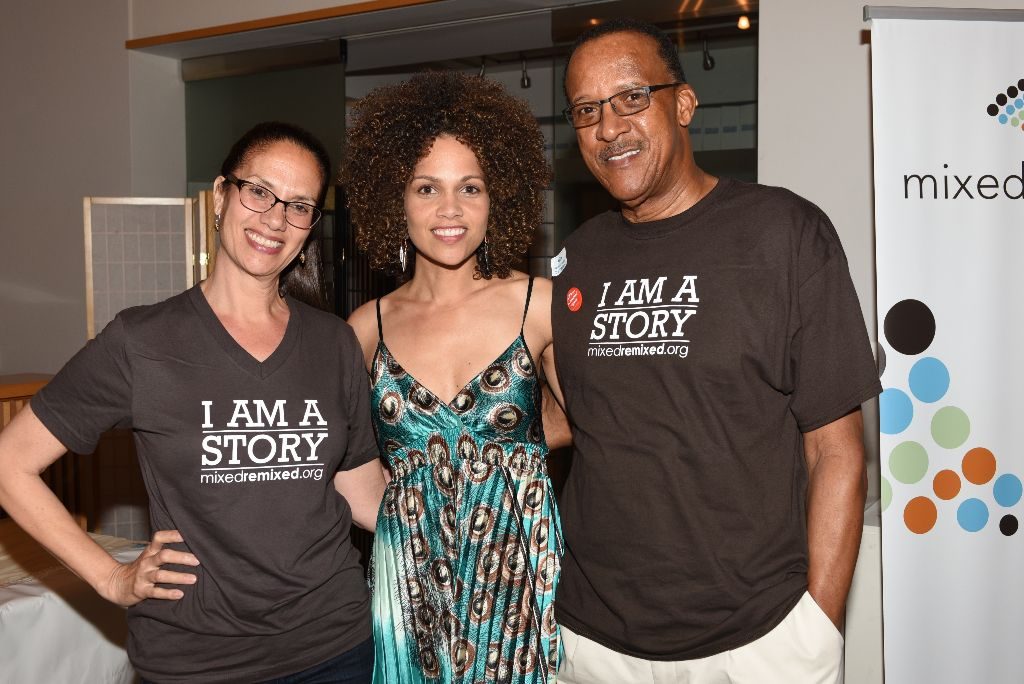 We are still buzzing from the great energy and love and enthusiasm from the festival last month. Are you too?
We are still buzzing from the great energy and love and enthusiasm from the festival last month. Are you too?
But we’ve also started to plan for the 2017 Mixed Remixed Festival which we think will be epic! It’s the 50th Anniversary of the Loving v. Virginia decision afterall!
 Immediately after the Festival we got some great news in the form of a grant from the California Arts Council. With support from the California Arts Council, Mixed Remixed will develop a comprehensive plan to engage the public and program quarterly events. We’ll outline a plan to extend the number of festival days and develop quarterly exhibitions and develop an engagement program with media & arts organization partnerships. We are extremely grateful for the support and look forward to bringing you more programming and more opportunities to connect!
Immediately after the Festival we got some great news in the form of a grant from the California Arts Council. With support from the California Arts Council, Mixed Remixed will develop a comprehensive plan to engage the public and program quarterly events. We’ll outline a plan to extend the number of festival days and develop quarterly exhibitions and develop an engagement program with media & arts organization partnerships. We are extremely grateful for the support and look forward to bringing you more programming and more opportunities to connect!
The question is what comes next? If you have ideas for us, please fill out our post-Festival three question survey and make sure your ideas are in the mix!
Parenting with Difference: Multiracial and Families of Transracial Adoption in Conversation
Parenting in a Multiracial Family
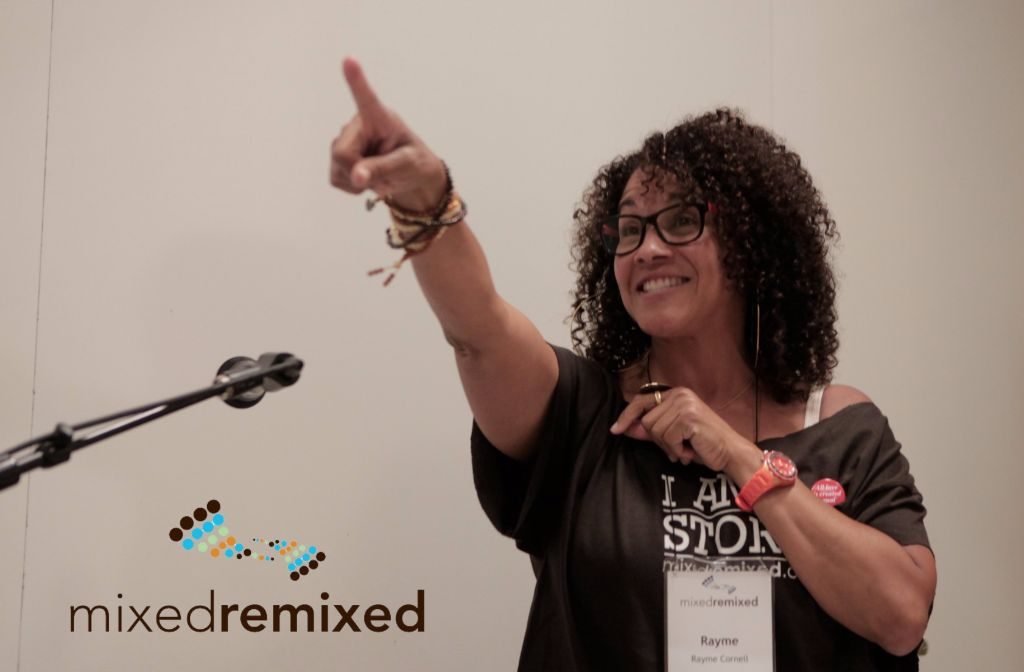 In response to being asked about the right time to discuss race with a child, Claude Knobler, author of the parenting memoir “More Love, Less Panic: 7 Lessons I learned about Life, Love, and parenting after we Adopted our Son from Ethiopia” told the following story:
In response to being asked about the right time to discuss race with a child, Claude Knobler, author of the parenting memoir “More Love, Less Panic: 7 Lessons I learned about Life, Love, and parenting after we Adopted our Son from Ethiopia” told the following story:
About a month after I brought Nati home from Ethiopia, I went to the grocery store with my very blue-eyed daughter, and my blond son, and Nati. And the man putting the stuff in the bags said, “Is that your family?” And I said, “Yes.” And he said, “Are those you children?” “Yes.” And he said, “One of them is black.” I said “Which one?”
Race is all around us, which is why raising kids in a mixed race family presents unique challenges, as well as unique rewards.
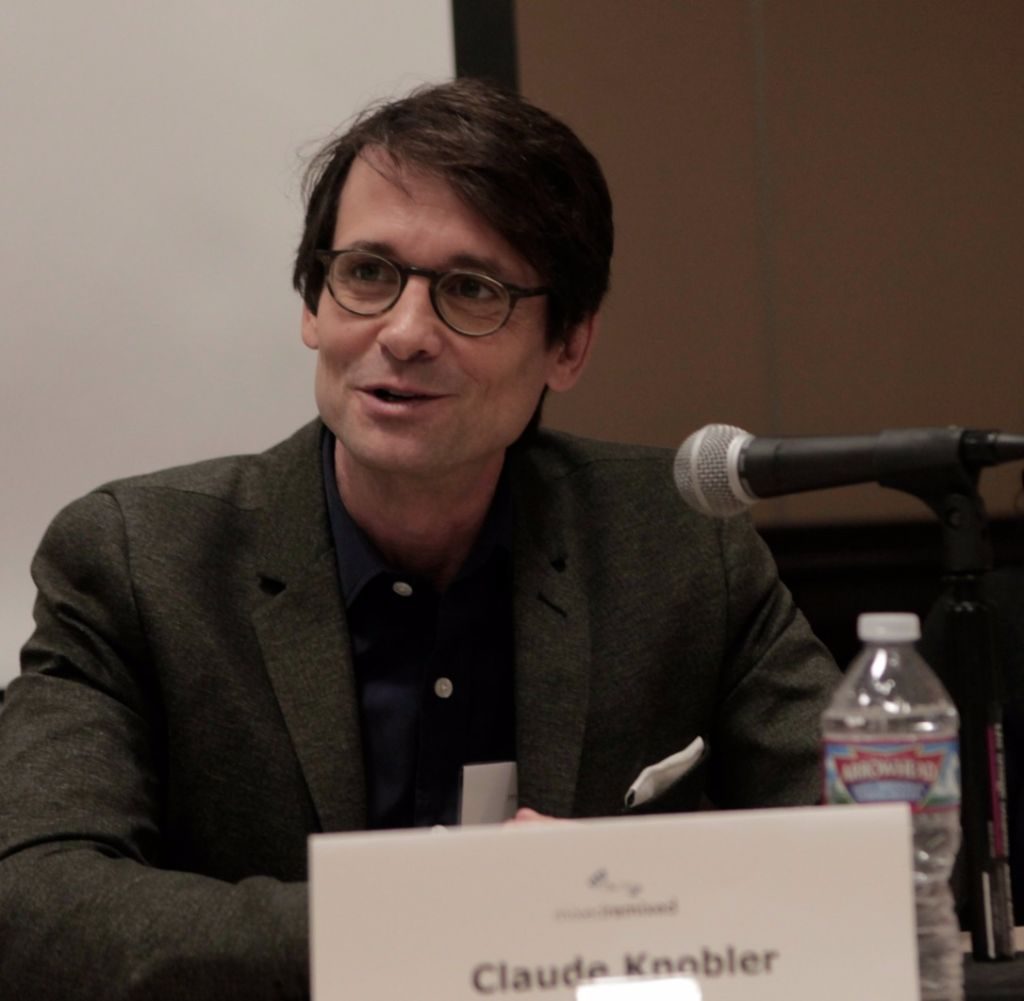 Mr. Knobler was among the panelists on the Parenting with Difference panel at the 2016 Mixed Remixed Festival, which was rounded out by Claudine Cooper, Elizabeth Enslin, Crystal Ksenjak, Lise Ragbir, Angie Sanders and Regina Wellman, and moderated by Rayme Cornell – an esteemed group of writers, bloggers, artists and advocates, each with a unique take on what it means to be a parent in a multiracial family.
Mr. Knobler was among the panelists on the Parenting with Difference panel at the 2016 Mixed Remixed Festival, which was rounded out by Claudine Cooper, Elizabeth Enslin, Crystal Ksenjak, Lise Ragbir, Angie Sanders and Regina Wellman, and moderated by Rayme Cornell – an esteemed group of writers, bloggers, artists and advocates, each with a unique take on what it means to be a parent in a multiracial family.
The panel addressed the a broad spectrum of multiracial family situations, from overseas and transracial adoption to biological children of mixed race couples. Naturally, the question of when and how to discuss race with children was a recurring theme.
Ms. Wellman is the founder of BiracialBoom.com, a website dedicated to parents raising biracial children. She founded the site after raising her biracial children so that others might benefit from her “20/20 hindsight.” Her advice was to introduce race via children’s picture books, which today cover families of all shapes, sizes, hues and genders. Angie Sanders, adoption advocate and founder of an Adoptive Parents Support Group, also felt that this was important for a preschooler. School is a turning point with respect to having control over that to which kids are exposed. Picture books are a great way of taking control of the subject matter before kids enter a classroom setting.
This racial consciousness is not limited to skin color. Writer and curator Lise Ragbir shared that at this point in her life, Ms. Ragbir’s daughter is more conscious of hair than of skin color – likely due, in no small, to the portrayal of young women and their hair in the Disney movie “Frozen.”
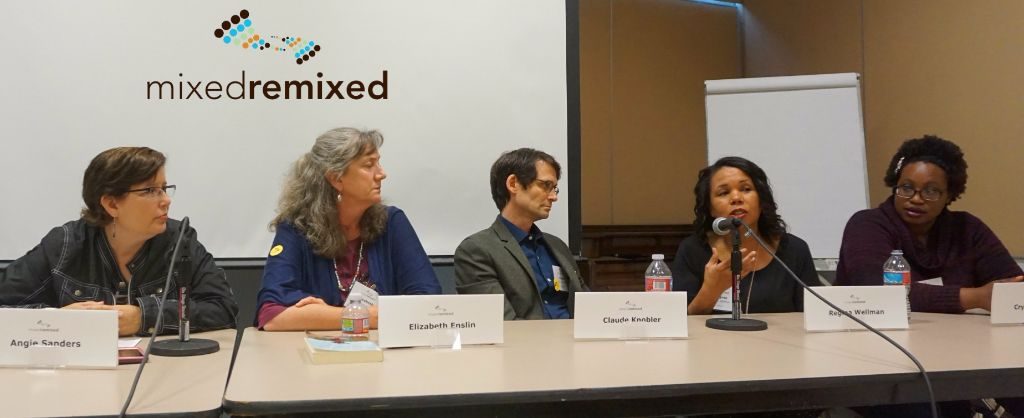 Finding one’s biological parents and the desire to seek out one’s biological identity are natural yearnings in adopted children. (“Do you know who your real parent are?” is to the adopted child is like “What are you?” to us mixed race folk). Ms. Sander’s approach to this issues was always to “keep an open dialog.” Share what you know and teach your child to think critically about what’s around him or her.
Finding one’s biological parents and the desire to seek out one’s biological identity are natural yearnings in adopted children. (“Do you know who your real parent are?” is to the adopted child is like “What are you?” to us mixed race folk). Ms. Sander’s approach to this issues was always to “keep an open dialog.” Share what you know and teach your child to think critically about what’s around him or her.
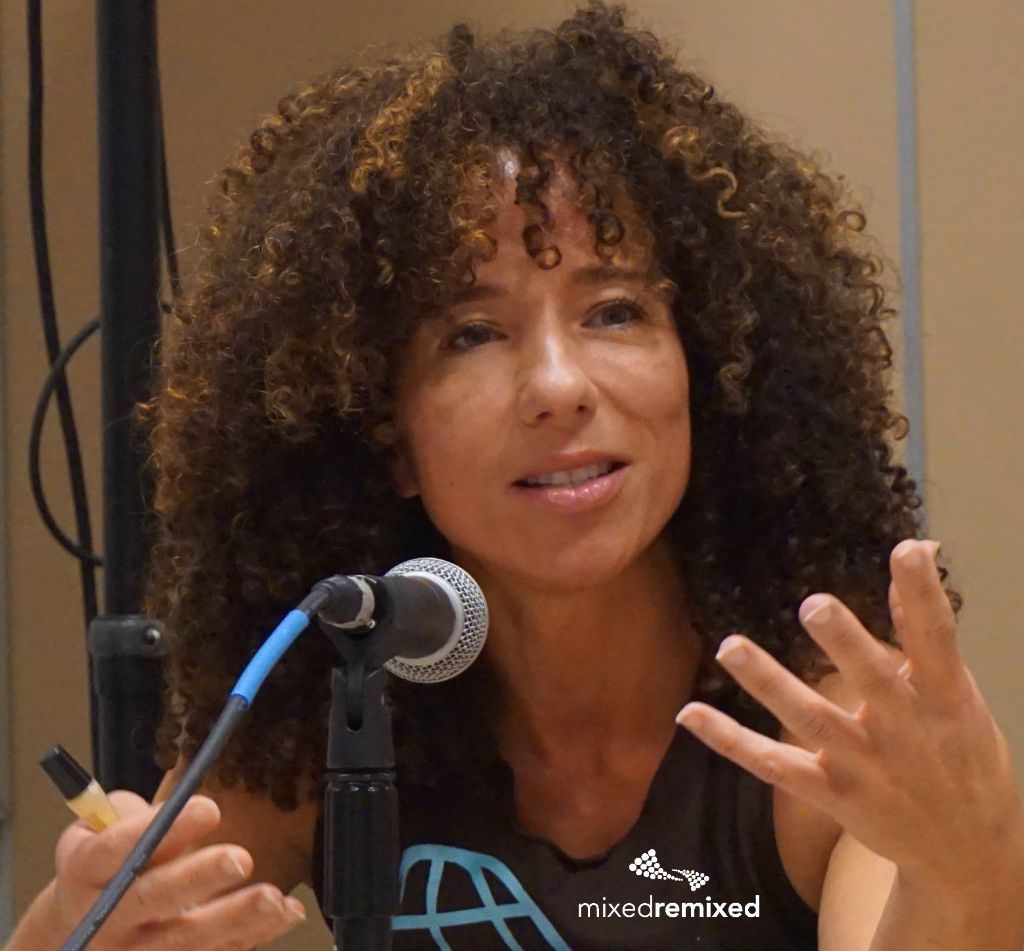 An important point to remember is that no parent can give their children everything. Referring to one of their trips to Africa with Nati, Mary Knobler, Claude’s wife, who was in the audience for the panel discussion, described how upon visiting Ethiopia Nati experienced what it’s like to be in the majority, and how that experience is just not something that they, as white parents living in the United States, can give Nati in his day-to-day life. “We can’t give him everything. We do the best we can with what we have.” As a mixed race father of a biological son and a daughter adopted from overseas, to that sentiment I emphatically relate.-Michael Maliner, Festival Blogger Twitter @plasticspoon
An important point to remember is that no parent can give their children everything. Referring to one of their trips to Africa with Nati, Mary Knobler, Claude’s wife, who was in the audience for the panel discussion, described how upon visiting Ethiopia Nati experienced what it’s like to be in the majority, and how that experience is just not something that they, as white parents living in the United States, can give Nati in his day-to-day life. “We can’t give him everything. We do the best we can with what we have.” As a mixed race father of a biological son and a daughter adopted from overseas, to that sentiment I emphatically relate.-Michael Maliner, Festival Blogger Twitter @plasticspoon
This is one story in a series about the programs held at the Mixed Remixed Festival 2016. Please read through them all by searching our blog with “2016 Festival Re-Cap.”
Coupleships: The Dynamics of Interracial Relationships
Coupleships: The Dynamics of Interracial Relationships
Where: Yuki Family Board Room at the Japanese American National Museum in Los Angeles, CA
When: Saturday, June 11, 1:30pm–2:20pm
What: panel to discuss the intricacies of interracial relationships
Who: moderator Lance Tango and panelist leader Christelyn Karazin
This panel at the 2016 Mixed Remixed Festival explored the dynamics of mixed coupleships and also touched on topics related to being a parent in a mixed-family.
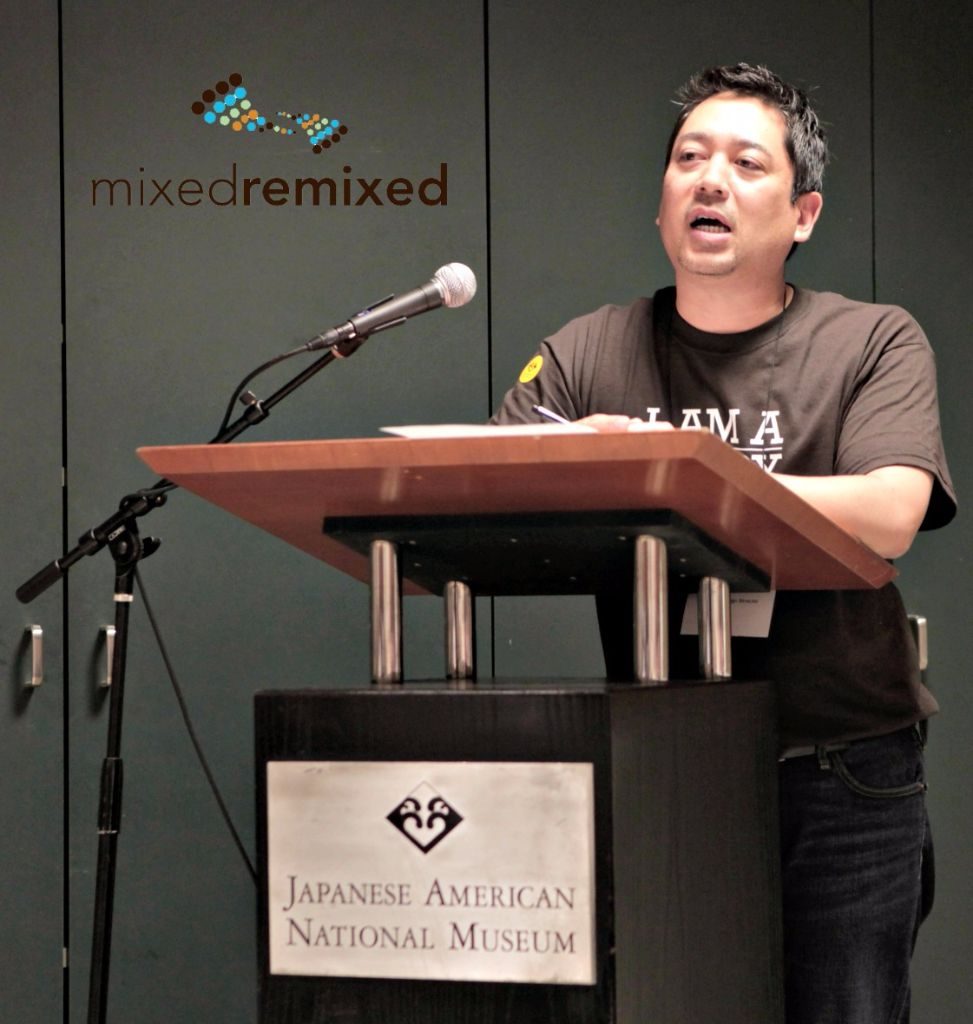 Many of us partaking in the Mixed Remixed Festival were the children (literally and/or figuratively) of an interracial relationship. Those of us who are of dating age have either thought about or been involved in these pairings ourselves.
Many of us partaking in the Mixed Remixed Festival were the children (literally and/or figuratively) of an interracial relationship. Those of us who are of dating age have either thought about or been involved in these pairings ourselves.
What does it mean to be in a “mixed” relationship? To hold different racial and cultural experiences than your partner? In this context, how do we view ourselves and each other, and how do other view us? Who judges whom, and why?
These are only the surface questions. Like most complex topics, mixed-race relations are layered. Therapist Lance Tango moderated a panel discussion on these dynamics. Heading the panel was Christelyn Karazin, author of Swirling: How to Date, Mate, and Relate Mixing Race, Culture, and Creed.
The Expectations of an Interracial Couple
We enter into any relationship, romantic or not, with expectations. Due to circumstance, previous experiences, or community-derived mentalities, we expect—we meet others with sandbags already tied to our ankles.
Of course, when discussing interracial relationships (I dislike this phrase; from here on out I’ll use “multicultural relationship”), we usually face conflicts of many kinds. There’s internal conflict. Or there’s familial conflict. Cultural conflict. Societal conflict. Each of these can stand alone, or they can mix for an uncomfortable cocktail.
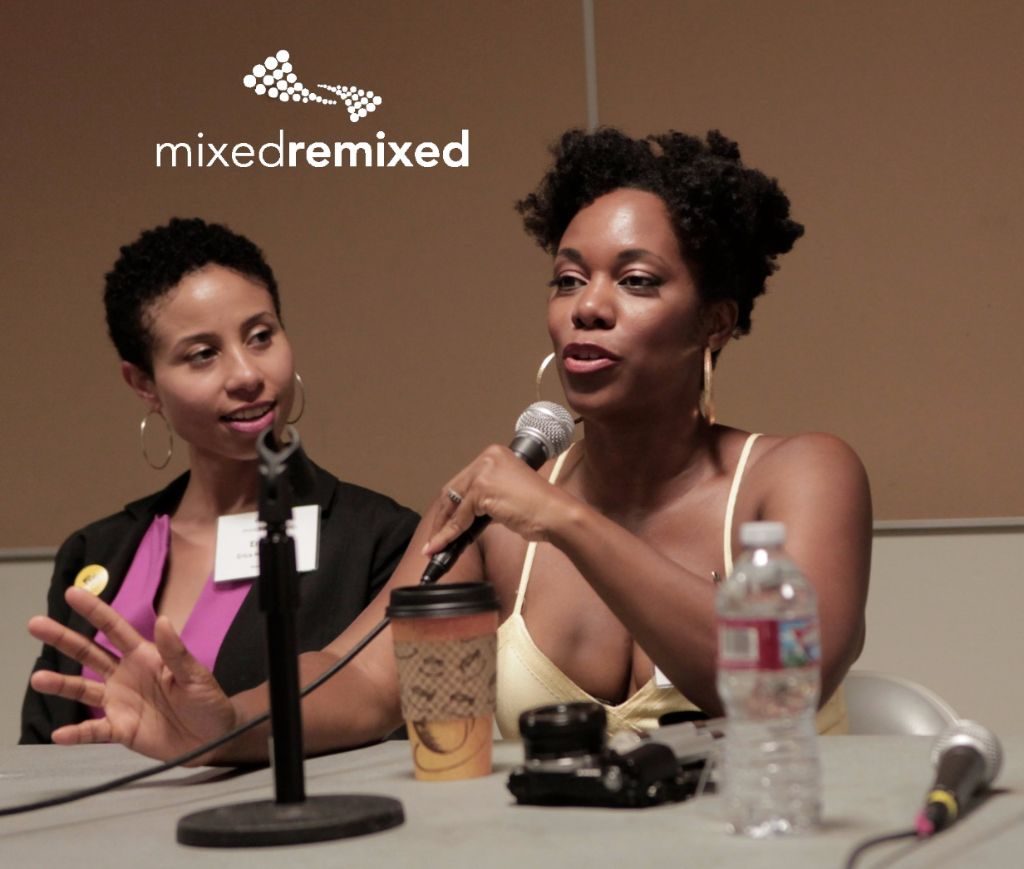 But let’s gloss over the easily imagined racist/bigoted/ignorant parent(s), etc. Family dynamics are often complicated in and of themselves. Judgments are flung like snowballs, and depending on your relationship with said relative, you brush off the flakes and ice, you crumple, or you throw your own. Yes, some families will still disown relatives for marrying “outside” the cultural tribe. Arguably, though, the problems we create ourselves are more interesting—they tend to blindside us.
But let’s gloss over the easily imagined racist/bigoted/ignorant parent(s), etc. Family dynamics are often complicated in and of themselves. Judgments are flung like snowballs, and depending on your relationship with said relative, you brush off the flakes and ice, you crumple, or you throw your own. Yes, some families will still disown relatives for marrying “outside” the cultural tribe. Arguably, though, the problems we create ourselves are more interesting—they tend to blindside us.
Christelyn summed this phenomenon up succinctly: “there’s often this internal conflict.” The internal struggle emerges from anxiety. And the anxiety? From a face-off between love and cultural expectations. For instance, upon reviewing Christelyn’s wedding album, her cousin noted that she’d worried about whether or not Christelyn was with her [white] husband for the “right” reasons.
And here we are. Reminded again of Loving v. Virginia, the Supreme Court case in which miscegenation was declared unlawful. (For those of you who’ve had the privilege of not knowing this word, the illness-inducing definition of “miscegenation” is “the interbreeding of people considered to be of different racial types.” Sorry if I made you lose your breakfast/lunch/dinner. Which word kills you most? For me, it’s “interbreeding.”)
But we’ve come so far, you say. Sure, but the road is long, and the bend continues ahead. A law case and nearly fifty years can’t undo centuries of internal and external strife. Misconceptions are passed down, generation to generation. Suspicions, stereotypes, prejudices. It’s hard to hold a civil dialogue about race when the other party is plugging its ears, shutting its eyes, and screaming its stance like a car alarm.
Also, as panelist Terry noted, “we impose some of those expectations ourselves. We need to separate the needs of our communities from our own.”
Racial and Gendered Norms In Interracial Relationships
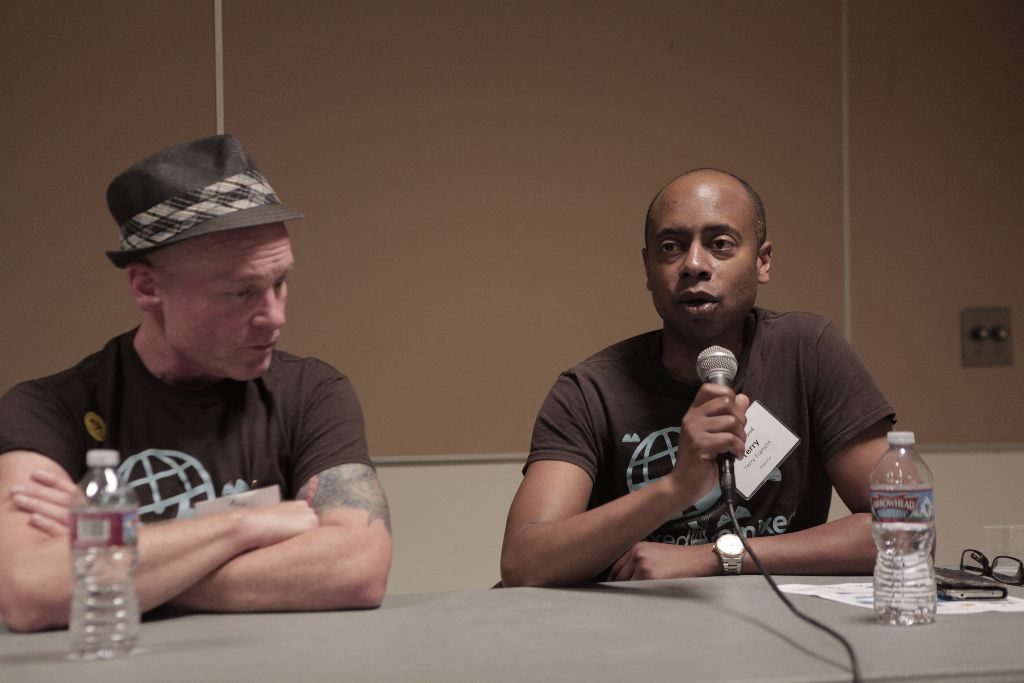 Out of this layered, Leaning Tower of Pisa–style cake, let’s select two layers. Race and gender. (I’d also add sexuality, but then I’d triple the size of this article. Stay, readers, stay.) For Eric Robinson, a relationship is like a home. You return home seeking “sanctuary.” Your partner is supposed to provide you with refuge, and you’re supposed to provide the same. An equal exchange. An exchange between equals.
Out of this layered, Leaning Tower of Pisa–style cake, let’s select two layers. Race and gender. (I’d also add sexuality, but then I’d triple the size of this article. Stay, readers, stay.) For Eric Robinson, a relationship is like a home. You return home seeking “sanctuary.” Your partner is supposed to provide you with refuge, and you’re supposed to provide the same. An equal exchange. An exchange between equals.
Fairy-tale romance aside, relationships—multicultural or not—require dialogue. Listening. Compromise. They can be rewarding, but they take work. Now let’s add outer pressures to the mix. That disagreement about the socks on the floor? Add the subtext derived from “because I married you, my mother thinks I’m a sellout.” The argument’s no longer about cleanliness and chores, is it?
There’s pressure to explain. Why’d you choose a black/white/Asian/Latin or Native American partner? Why’d you chose an outsider? Are we not good enough? Why are you complicating things? Don’t you realize that this person could be fetishizing/exploiting you?
For Christelyn, she felt pressure to “date black.” She felt that her community wanted her to ask for permission to “rewrite the Cinderella story.” Black men, she noted, weren’t questioned for dating who they desired and connected with. But black women were supposed to uphold “standards.”
What We Learn From Being Part of an Interracial Relationship
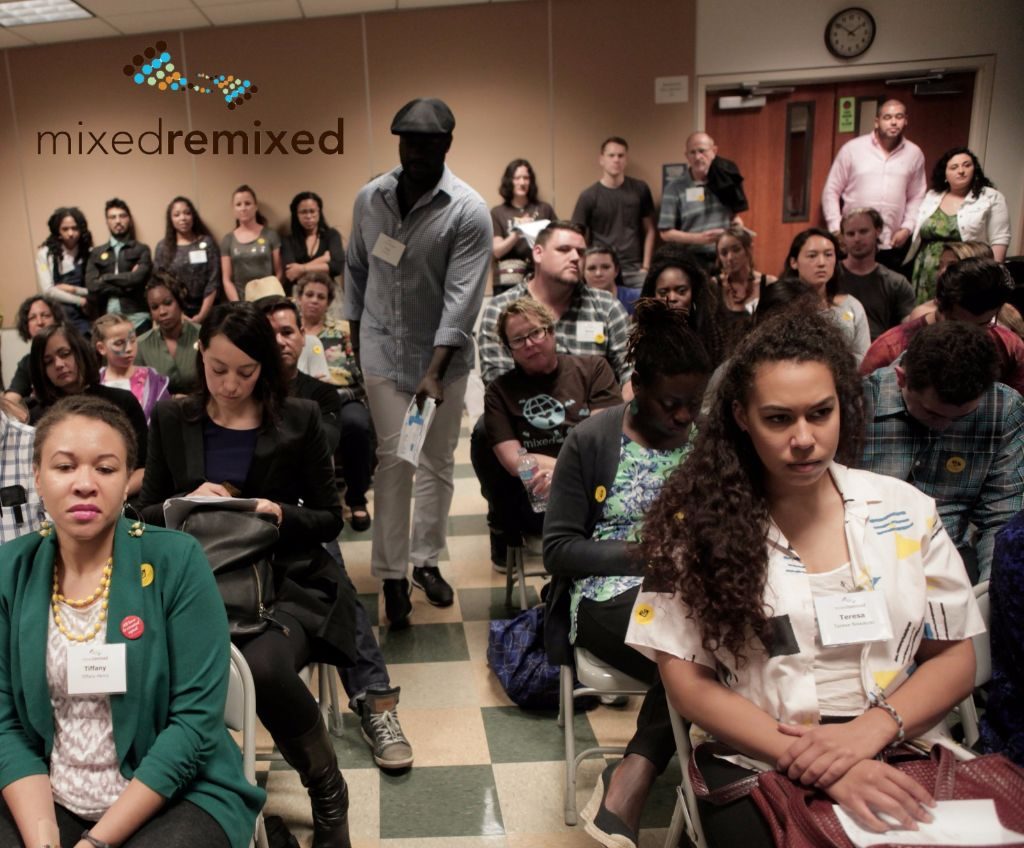 When we’re raised in a certain community, we’re inculcated with racial, cultural, sexual, and gendered norms. Parent to child. Community leader to community member. Media to consumer. We’re inundated. Sometimes a little self-awareness is all that’s needed to break the ties we don’t want to be bound by. Other times, the situation’s harder to escape from.
When we’re raised in a certain community, we’re inculcated with racial, cultural, sexual, and gendered norms. Parent to child. Community leader to community member. Media to consumer. We’re inundated. Sometimes a little self-awareness is all that’s needed to break the ties we don’t want to be bound by. Other times, the situation’s harder to escape from.
Toward the end of the panel discussion, Erica gave audience members some thought gems. “Real-life experiences of oppression lead to solidarity.” This solidarity complicates already-complex generational familial differences and multicultural relationships. However, the uplifting end note: “I don’t think the differences are insurmountable.”
The salve can be found in open-minded communication. So let’s all agree to ponder the prefix “inter” in the word “interaction.”-Joy Stoffers, Festival Blogger-in-Chief
This is one story in a series about the programs held at the Mixed Remixed Festival 2016. Please read through them all by searching our blog with “2016 Festival Re-Cap.”
Writing with Jamie Ford: A Workshop at the Mixed Remixed Festival
New York Times Best-selling Writer Jamie Ford Coaches Next Crop of Storytellers of the Mixed Race and Multiracial Experience
Where: Mixed Remixed Festival Yuki Family Board Room at the Japanese American National Museum in Los Angeles, CA
When: Saturday, June 11, 9:30am–11:30am
What: interactive workshop to discuss manuscript excerpts from five writers
Who: moderator Jamie Ford
This was a special fiction manuscript workshop with Jamie Ford. Participation was limited to pre-selected writers who had registered and submitted their respective work-in-progress (a maximum of 25 pages) in advance of the festival.
Writing with Jamie Ford
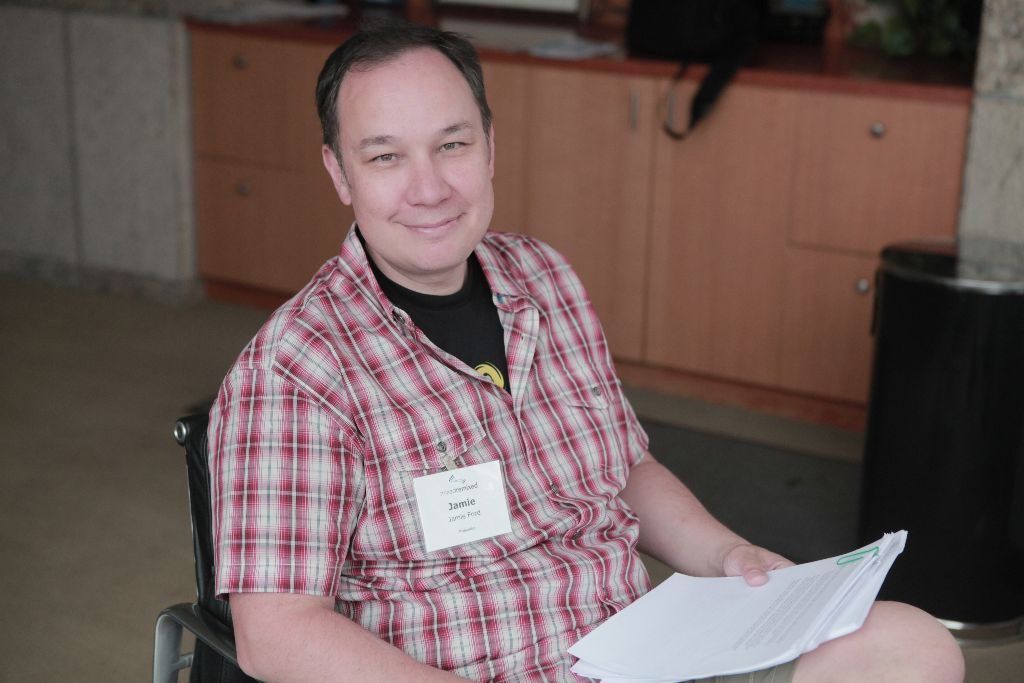 Writers, like everyone else, have heroes. I’m tired of affiliating myself with the word “emerging,” so I declare myself a hatch-ling. Arguably, writers in the incubation or hatching stage put more weight on (famously) hatched authors. Our chick eyes widen at the sight of appreciated chickens and roosters.
Writers, like everyone else, have heroes. I’m tired of affiliating myself with the word “emerging,” so I declare myself a hatch-ling. Arguably, writers in the incubation or hatching stage put more weight on (famously) hatched authors. Our chick eyes widen at the sight of appreciated chickens and roosters.
Anyway, fowl metaphors aside, I’m going to out myself and state that Jamie Ford is one of my novelist heroes. It was a real thrill to be participating in a small workshop that he led—and this thrill was heightened by the fact that the Mixed Remixed Festival was the reason for its existence. I’m not the only one with such feelings. For workshop participant Romalyn Tilghman, it was “an extraordinary opportunity for feedback and conversation with an important, published author and [to hear] emerging voices.”
For those of you who haven’t had the pleasure (or torture, depending on workshop circumstances) of experiencing a writing workshop, know that outcomes and discussions can be unpredictable. It’s easy to imagine. 1) Insert a recognized writer or professor and fledgling writers in the same room. 2) Discuss in-progress work. The moderator needs to make the sharers comfortable, but also challenge them. Praise but critique. Encourage experimentation but advise regarding practicalities. From the beginning, the room’s sweating with at least mild tension or nervousness.
In case you were wondering who my workshop colleagues were—and where you can find their writing, allow me to virtually introduce you to fellow Mixed Remixed Festival blogger Clare Ramsaran, writer Katrina Goldsaito, writer Shannon Luders-Manuel (who unfortunately couldn’t join us), and of course aforementioned writer Romalyn Tilghman.
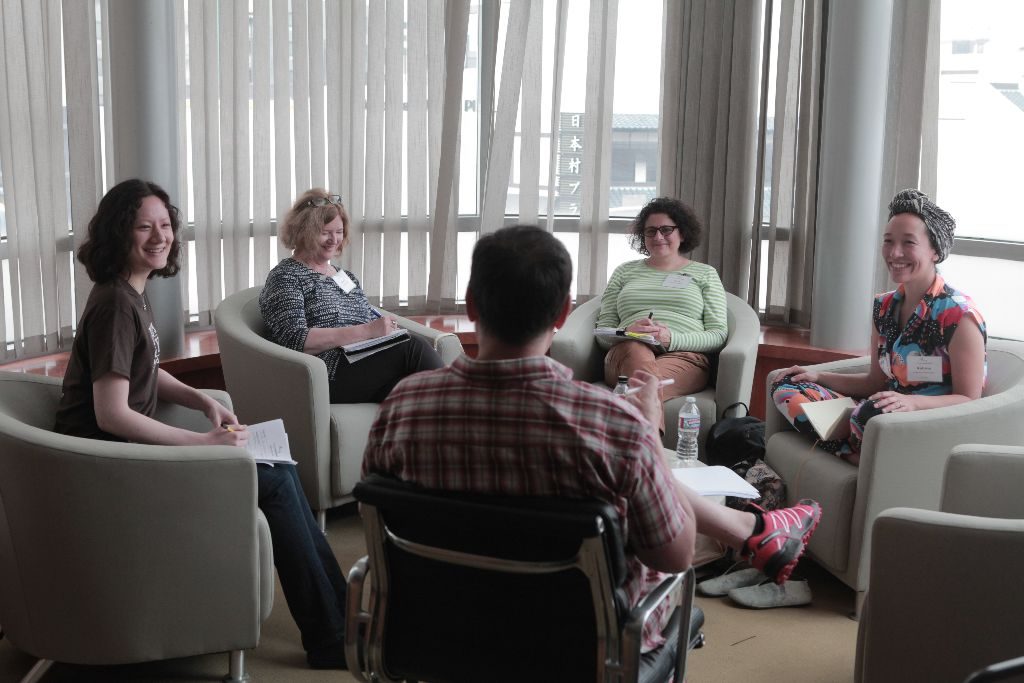 I may disappoint some of you by revealing that during the workshop there were no raised voices, thrown papers, or tears. The session went smoothly. We began with short introductions, and then made the most of workshop time. Each writer commented on a particular writer’s manuscript excerpt, Jamie offered his thoughts, and then the author explained and/or asked questions.
I may disappoint some of you by revealing that during the workshop there were no raised voices, thrown papers, or tears. The session went smoothly. We began with short introductions, and then made the most of workshop time. Each writer commented on a particular writer’s manuscript excerpt, Jamie offered his thoughts, and then the author explained and/or asked questions.
That sounds stiffly academic, but the atmosphere was a relaxed, productive one. Personally, my favorite parts were when Jamie sprinkled manuscript commentary with general writing advice. Thus, without further ado, Jamie’s thoughts on the art of writing.
Jamie Ford Quotes on Writing
I took a moment to write for myself.
I think there’s a Venn diagram of what we write and what people want to read. [Shame on me: I couldn’t write the gold fast enough. But I can paraphrase: Jamie noted that we can aim to meet readers somewhere in the middle of the diagram. (What’s this, intersectionality? Sounds rather mixed remixed…yes, I give you permission to cringe at the adroit-less pun.)]
I encourage self-awareness as a writer.
Find a way to be happy [on the spectrum of critical acclaim and commercial success].
I encourage people to be genre-blind. [I.e., challenge yourself to write outside and in between genres. Write first, and worry about marketing later.]
The work requires its own deadlines sometimes.
Write what you want to write.
What you put on the page—that’s you.
[Don’t be] slave to a trend.
You can be a prisoner of your success. [So, to return to his first quote, write for yourself.]
Final Thoughts from a Hatch-ling
Try to discover who you are, and who you think you want to be. As a mixed-race person or not. As a writer or not. We live in flux, and in the flux. Accept change. Create change. Work with change. When we learn to house ourselves in our own skin, we learn to mind what we want to mind, instead of what we “should” mind.–Joy Stoffers, Festival Blogger-in-Chief
This is one story in a series about the programs held at the Mixed Remixed Festival 2016. Please read through them all by searching our blog with “2016 Festival Re-Cap.”
Bombarding the Slush Pile: Literary Submissions with Women Who Submit
Where: Mixed Remixed Festival 2016, Democracy Lab at the Japanese American National Museum in Los Angeles, CA
When: Friday, June 10, 11:30am–12:20pm
What: interactive workshop to discuss literary submissions
Who: moderator and poet Ashaki M. Jackson
Writers Talk Literary Submissions at Festival Celebrating Mixed Race and Multiracial Stories
This workshop was open to literary writers interested in creating a submission practice and/or increasing their readership by being published in top-tier journals. Ashaki and her colleague, Ashley Perez, provided an overview of basics, including creating a submission schedule, submission tracking, and cover-letter development. Participants left the workshop with simple submission materials.
 Women Who Submit (WWS) seeks to empower women and non-binary writers by creating physical and virtual spaces for sharing information, supporting and encouraging literary submissions, and clarifying the submission and publication process. In their fourth year of operations, they have chapters in California’s Bay Area, Long Beach, and Las Vegas—with new possible roots in Arizona and North Dakota. The founding body has a membership of over 30 women, and their virtual communities each exceed 1,000 people.
Women Who Submit (WWS) seeks to empower women and non-binary writers by creating physical and virtual spaces for sharing information, supporting and encouraging literary submissions, and clarifying the submission and publication process. In their fourth year of operations, they have chapters in California’s Bay Area, Long Beach, and Las Vegas—with new possible roots in Arizona and North Dakota. The founding body has a membership of over 30 women, and their virtual communities each exceed 1,000 people.
On the second Saturday of every month, women congregate at a member’s house for a “submission party.” Amidst the wine and cheese and chips, writers sit down and write out their submission goals. Sometimes guest speakers visit to discuss writing craft and publishing. They welcome women and non-binary writers to register and partake in a new-member orientation. It’s no secret society, and it’s an incredibly nurturing one.
The “Why” of Literary Submissions
After informing an eager audience of Women Who Submit’s history and mission, poet and co-founder Ashaki Jackson asked us this seemingly simple question. I scanned the faces of writers in the filled room. Confusion, unease, and ponderous looks. Maybe I was merely projecting my own feelings, but I think these resonate.
Ashaki, in her calm wisdom, asked us to materialize these fears through words. She pointed to the sticky note in the green submission booklet each participant had. We needed to write down our hesitations—and then stick them onto a board. Seeing the little pink and teal squares against the white background almost felt comical. “This is the Wall of Terror,” she joked. We laughed, partly because it was funny, but partly because the metaphor hit truth.
The two most common concerns/fears that Ashaki read aloud?
- Rejection
- Where to begin?
Let’s explore them.
Rejection Woes
Why we submit trickles from why we write. As Ashaki said, “you’re writing for yourself; you don’t have to write for your readers.”
Ashley Perez, a WWS member, agreed. “We submit to silence that voice in our heads that says we’re not good enough. I write and [submit] because there’s something in me burning…I have to get this work out of me and onto the page.”
An attendee, Maria, had similar thoughts. “I submit almost as a writing exercise. I now feel like a door has opened and I want to share [my writing] with the world.”
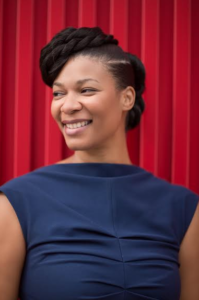 But what about those rejections? Ashaki offered answers. “It takes time to build your confidence. Know you’re not alone, and that you’re trying to build your readership.”
But what about those rejections? Ashaki offered answers. “It takes time to build your confidence. Know you’re not alone, and that you’re trying to build your readership.”
Rejections will always hurt, at least a little. But for Ashaki, WWS encourages us to “celebrate rejections because we’re exercising our submission muscles; we normalize rejections.” When rejected, “we just need to find a better fit.”
One easy way to self-encourage? When submitting an self-addressed stamped envelope (SASE), “write an encouraging note to yourself on the envelope.” If you receive a rejection, the first thing you’ll see is your comforting note, and your familiar handwriting. It’s a little way your present self can make your future self feel better.
Drowning in Too Much Information
Google’s great. Perhaps too great. Type in a single word and you can receive 1,470,000,000 results in 0.39 seconds (literally: I just searched for “submit”). Where do we begin when we don’t know about or don’t have access to journals, top-tier or not? WWS to the rescue! At submission parties, members bring a portable journal library, and are happy to share those glossy in-print pages. Go to the library to check out ones you like to read. (Would you want to submit to a journal you hate? I hope not.)
“Familiarize yourself,” Ashley advised, “with the same spaces writers you admire occupy.”
Ashaki encouraged us to note where our peers have been accepted. “What do you read, and where do you want to be? Access who you think you are as a writer.” Think beyond the big-name journals to find “your personal tiers.” Again, submit for yourself: “you don’t have to follow the traditional system.”
Poets & Writers, as well as The Writer’s Chronicle, are helpful starting resources.
Once you know where you want to submit, materialize your goals—ink them out in a list.
Also, if you’ve got a forthcoming publication, Ashaki especially believes in submitting. She submits 6–8 months prior to her work being published.
Attendee Takeaways
Katrina and Liane both found the session helpful and informative, and thought that WWS gave them direction and inspiration.
Via really appreciated the booklet WWS provided, and thought that Ashaki and Ashley made the submission process less intimidating.
Aurelia said that she’d been writing all her life, but until now hasn’t had the courage to submit. Through Ashaki’s workshop, she’s now listening to the possibility.
The Founding Mothers of WWS
Women Who Submit co-founder Xochitl-Julisa Bermejo is a high school English and drama teacher, as well as a poet and fiction writer. Sundress will publish her poetry collection, Built with Safe Spaces, in fall 2016. Co-founder Ashaki M. Jackson is a social psychologist and poet. Her chapbook, Surveillance, is available through Writ Large Press. Senior member Tisha Reichle is a high school teacher and fiction writer whose work is included in The Acentos Review and the Santa Fe Writers Project.
This is one story in a series about the programs held at the Mixed Remixed Festival 2016. Please read through them all by searching our blog with “2016 Festival Re-Cap.”
